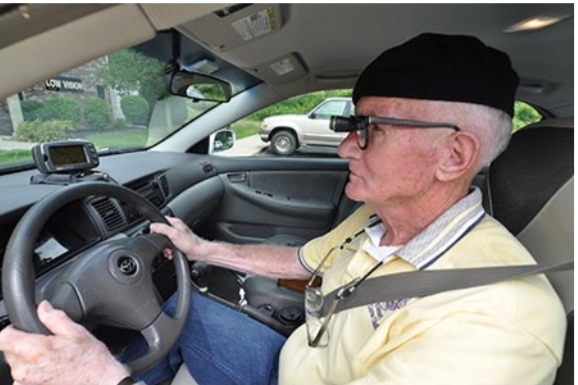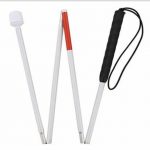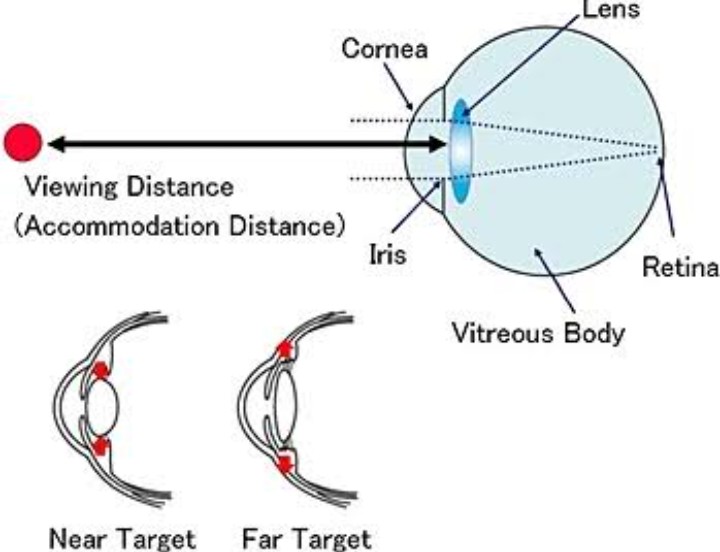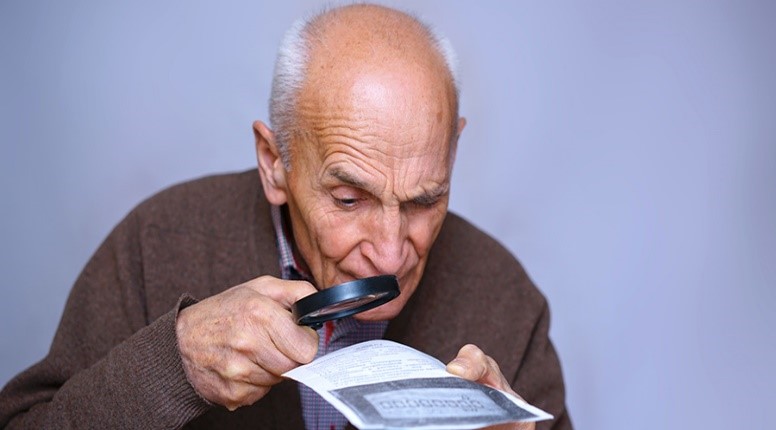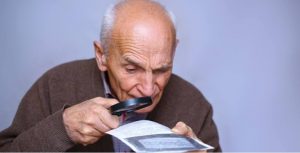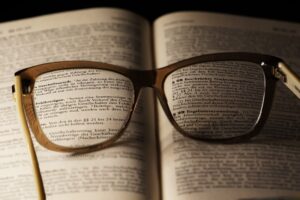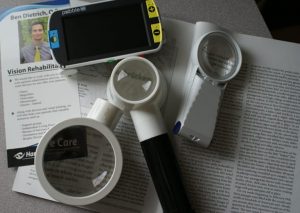Low vision devices for distance viewing will allow individuals with low vision to access information in the distance, generally of distances more than 10 feet. This can be helpful in the classroom, work-site as well as in the community and some devices are specially designed to allow individuals with low vision to to drive.
Individuals can be taught to use their prescribed distance optical devices to complete short-term distance tasks such as viewing directories in office buildings, menus in fast food restaurants, signs in grocery store aisles, score boards, information presented on the class board, information on smart boards, and classroom charts. They can also be used during O&M lessons to view house numbers, building signs, street signs, and bus numbers. A low vision specialist will prescribe these to students who can benefit from their use and take into account the student’s unique visual needs.
Optical Devices for Distance Viewing
1.Hand Held Monocular Telescope
A monocular is a small telescope that is great for spotting information at a distance. Hand Held Monoculars provide power up to 14x. They are hand-held, but there are also models that can be mounted to a pair of glasses. They are small in size and can fit into a pocket or purse. They are helpful in spotting information such as information on the board, demonstrations, bus numbers, street signs, fast food restaurant menus, and scoreboards but they do restrict the visual field and limit the student to just one free hand. They are helpful in recreational settings to view theater and sporting events. The best use of telescopes and monoculars is to view information and presentations and not for note taking as copying while using the monocular is very exhausting. Students should be encouraged to take the monocular to other school events (e.g. assemblies, film presentations, games, field trips, etc.). When a student is using a telescope to read the chalkboard, they will need to sit at a specific distance based on the power and quality of the device. This distance along with the specifications of the use of the device, would be included in the report from the Low Vision Specialist. Keep in mind that it is difficult to copy work from the board as the student would need to continuously shift their gaze and scan to locate information.
2.Binoculars Telescope
Binoculars are used for short term distance viewing when students have vision in both eyes and can fuse an image. They can provide a larger field and make it easier to find targets, but are larger and heavier than monoculars and much more conspicuous.
3.Spectacle Mounted Telescopes
Telescopes of up to 8x magnification can be fitted into spectacle frames or clipped onto the users own spectacles. These are not intended to be used when traveling as they have a very restricted field of view. They are intended to help users read sheet music, watch TV, and view other information when in a seated position.
4.Bioptic Telescopes
These telescopes differ than the above as they allow the user to walk and otherwise travel safely when using them. The top has an “auto focus” so that objects viewed will automatically come into focus regardless of the distance.
The Telescope Prescribing Goal
As discussed previously, patients complain that they cannot see far enough away to perform whatever activity they have in mind. Patients with 20/40 vision, although they may notice some reduction in visual clarity, can usually see well enough for most activities. In fact, in most states, individuals are licensed to drive without restrictions with 20/40 acuity, and children are unencumbered in the classroom with that level of acuity. It is reasonable to assume then, that if we can provide 20/40 acuity through the telescope, most patients should be reasonably satisfied with the functional benefit it provides. So, if the goal is 20/40, a 2x device should be adequate for an individual with 20/80 acuity, 4x for 20/160, and 6x for 20/320.
Field of View
If we prescribe higher magnification to achieve better acuity it will be at the expense of a narrower field of view, which is the major complaint of telescope users. Clinically we find that users have increasing difficulty when fields become narrower than 10 degrees. So, we always need to balance adequate acuity while maximizing field of view with the telescopic device that will be prescribed.
The patient’s perspective on low vision telescopes
When we place a telescope in front of the patient their immediate reaction will be that everything appears closer. Of course, that’s true because the image is enlarged by a factor of the power of the device. The value to the patient, however, is not that the image is larger, but that they can see it further away. A 4x device will allow a target normally only visible as far as 10 feet away now be seen as far as 40 feet away.
However, not all patients receive a geometric acuity gain from telescopes. This is especially true in individuals with poorer acuities such as in neovascular AMD, diabetic retinopathy, and media issues. Those with a retinal “ring” scotoma (not to be confused with the ring scotoma produced by a telescope) may experience a reduction in acuity with magnification!
Telescopic options for low vision
Low vision telescopes are available as handheld, spectacle clip-on, head born self-contained, and as eyeglasses in full diameter and bioptic designs. Virtually all styles are available in both Galilean and Keplerian optical designs. When individuals need magnification greater than 6 or 7x, handheld monoculars (or even binoculars) become a compelling option.
If the telescope would be used only infrequently and in episodic activities often a handheld device will be acceptable. If the activity requires that the hands are available, or if the user does not have the dexterity to aim the device, or if the telescope would be used for extended viewing purposes, then a head born device is appropriate.
Head born designs are available with the telescope centered in the patient’s field of view (full diameter position), positioned inferiorly and converged in the reading position, or located above the line of sight so that the user can alternate their view between the carrier lens and the telescope (Bioptic position) to allow for mobility. The bioptic design is prescribed for drivers needing to see signs and traffic lights where legal and appropriate. Actually, the telescopes can be custom mounted in any position and for any distance, as the task requires.
Determining a prognosis for a successful telescope prescription
As a result of NIH-funded clinical trials, a Telescope Prescribing Protocol has been developed to help establish a prognosis for successful telescope prescribing. It is divided into two parts—Hard Signs, those that can be measured or otherwise determined, and Soft Signs, those that are judgments and are developed through patient interaction.
Hard Signs:
Visual Acuity: Best corrected visual acuity through the telescope is in the 20/40 to 20/50 range.
Contrast sensitivity: Able to see facial features while looking through the telescope at a distance of 12-15 feet under normal room illumination.
Ocular Dominance: That the better seeing eye is the dominant eye, OR, that while looking through the telescope the dominant eye sees better than the fellow eye.
Soft Signs:
Appropriate activity goals for use of the device: Telescopes are primarily used for distance and midrange visual activities.
Dexterity with the device: Patients who show a natural skill and an intuitive familiarity with using the device will be more successful in their adaptation. Evaluation of such skills should be done out of the examining room and in an environment more akin to a normal setting.
Motivation and enthusiasm: No matter how natural it is for the patient to use the device, and no matter how well it enhances their vision, patients must be personally motivated to seek to improve their vision. They must be prepared to confront the challenges integrating such a device into their daily activities.
The five questions you should ask your patient to identify a promising telescopic candidate.
If your patient can answer YES to the following questions than they may be a good candidate for telescopic systems.
Is your vision loss due to macular degeneration or a similar disorder that causes a loss of central, detail vision?
Is vision in the better eye with your best eyeglass prescription (if used) 20/300 (6/90) or better?
Can you read headlines on a newspaper?
Can you watch TV or recognize people’s faces from farther than 2 feet away?
Do you understand that this device is designed to help you see better at distance and midrange for faces, signs, TV, computer screens, shopping and traveling?
